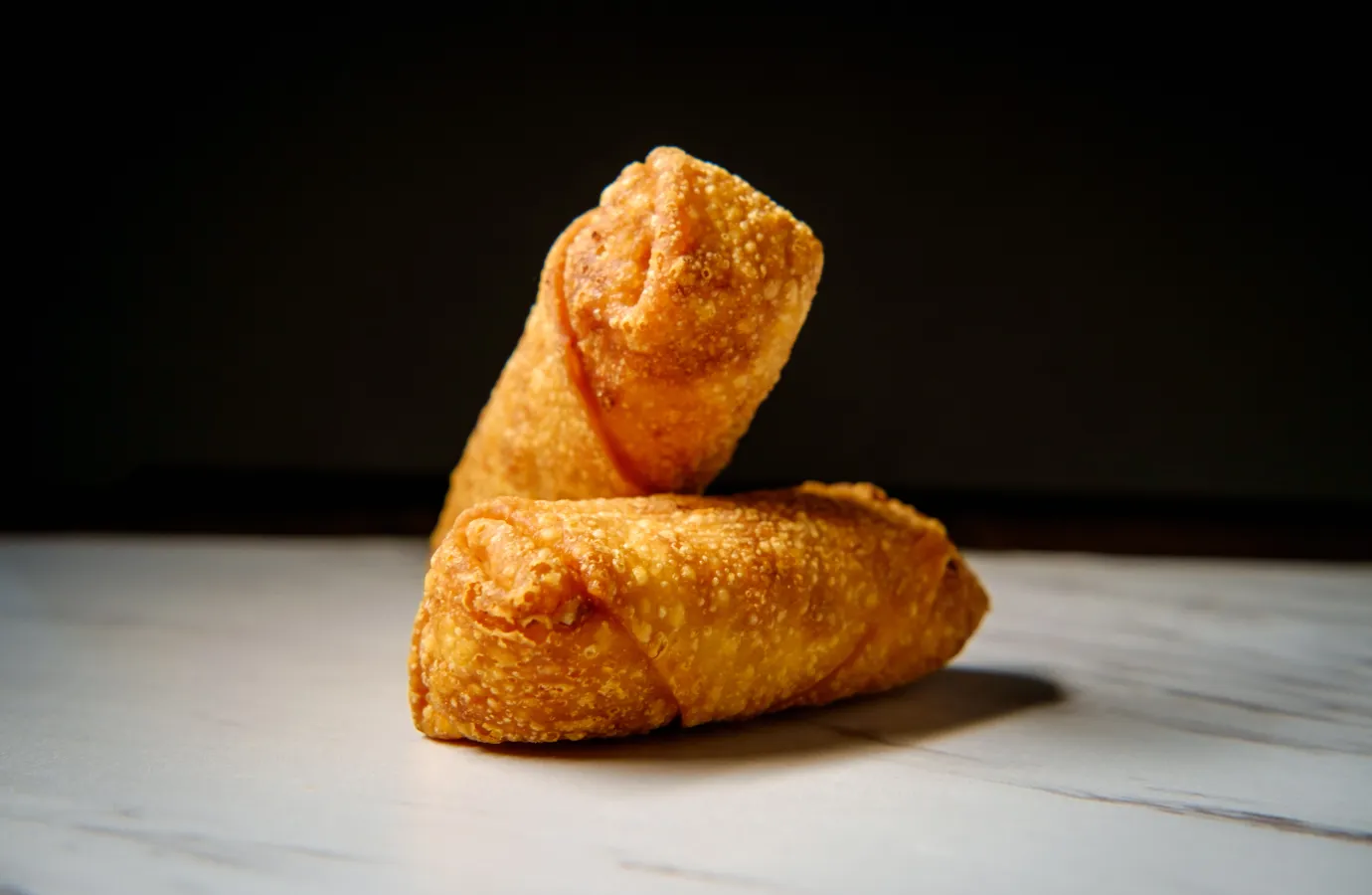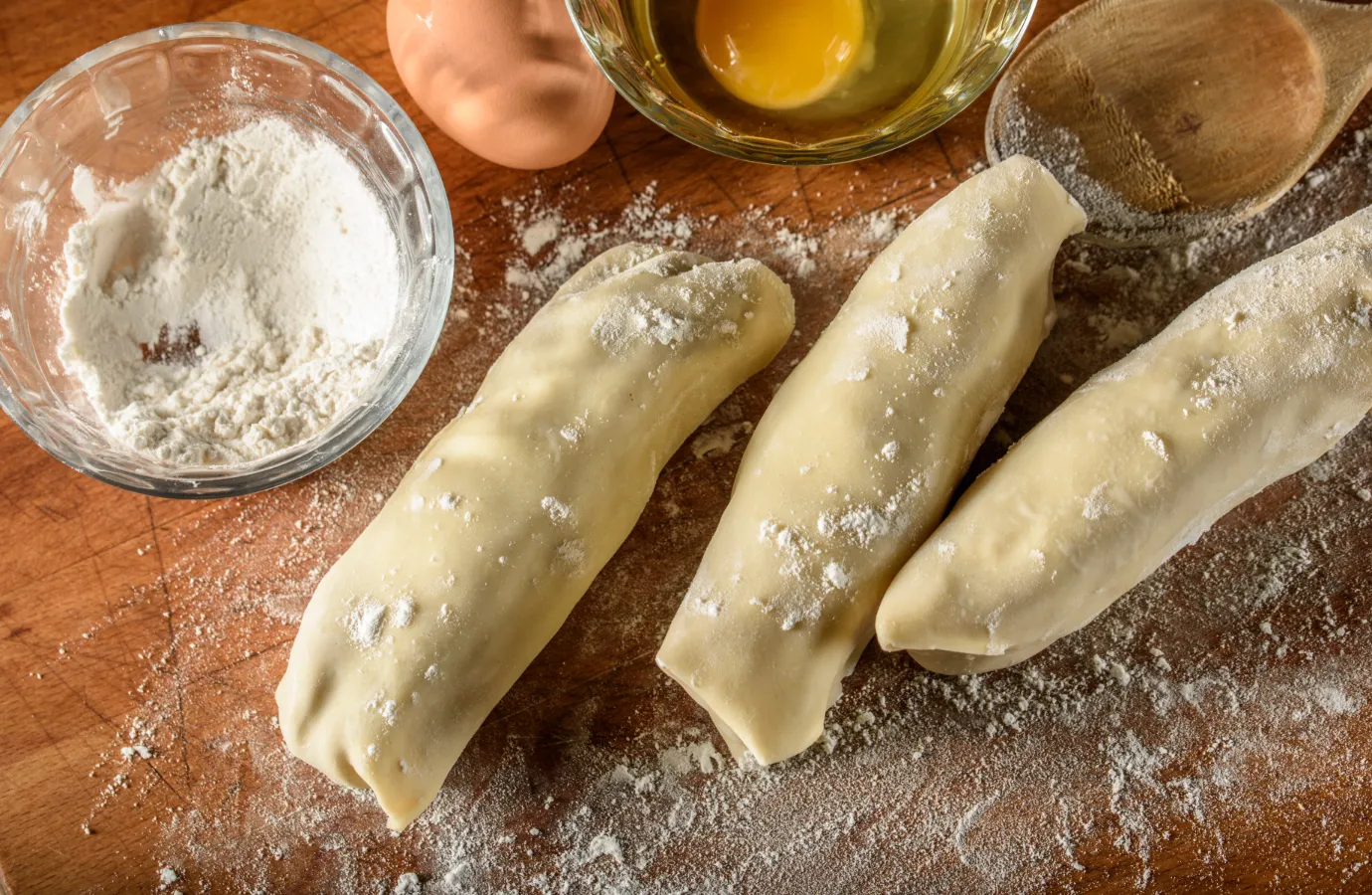
Ah, the humble egg roll – a staple of Chinese takeout that has wriggled its way into the hearts of food lovers worldwide. But what’s in a name, especially when it comes to this crispy, savory delight? In this deep dive, we’ll unwrap the history, variations, and secrets behind Chinese egg rolls, answering burning questions and exploring how a simple appetizer has become a culinary icon. So, let’s roll into this tasty journey, shall we?
Introduction to Chinese Egg Rolls
Egg rolls have become synonymous with comfort food, especially within the realm of Chinese takeout. But how did this appetizer achieve its almost legendary status? Well, it’s all about the perfect blend of crispy, savory, and umami-packed flavors that dance on your palate. From their intriguing name to the varied fillings wrapped in a delicate, golden shell, egg rolls offer a world of taste in every bite.
What Are Egg Rolls?
At their core, egg rolls are fried, savory rolls, typically filled with a mix of cabbage, chopped Chinese roast pork, and occasionally shrimp. The magic happens when they hit the hot oil; the wheat flour-based wrappers puff up, creating those characteristic small bubbles that give egg rolls their signature crispy texture. Yet, despite their name, you’d be hard-pressed to find an egg within the filling itself!
Origins of the Name
The story behind the name egg roll is as layered as the dish itself. It’s an American creation that evolved from the Chinese spring roll, taking on a life of its own sometime in the early 20th century. The “egg” part of the name is a bit of a misnomer – the filling rarely contains any egg. Instead, the name likely refers to the egg in the dough of some versions of the wrappers, though not all egg roll wrappers contain it. This American-Chinese invention serves as a bridge between cultures, blending the familiar with the exotic in a deliciously crunchy package.
So, as we peel back the layers of the egg roll’s history and culinary composition, it’s clear that this dish is more than just a takeout staple. It’s a testament to culinary evolution, a fusion of flavors and traditions that continues to captivate and satisfy appetites across the globe. Stay tuned as we roll further into the fascinating world of Chinese egg rolls, exploring the variations that make this dish a beloved icon in the culinary world.
The Name and Its Origins
Diving deeper into the egg roll saga, we encounter a blend of history, culture, and culinary innovation. This section aims to unravel the mysteries behind the name “egg roll” and its journey from Chinese kitchens to American menus.
What Are Egg Rolls?
Egg rolls stand as a testament to the creativity and adaptability of cooks who brought Chinese flavors to American shores. Picture this: a savory mixture of cabbage, roast pork, and sometimes shrimp, all snugly wrapped in a wheat flour-based wrapper. When these bundles hit the hot oil, they transform. The wrappers bubble up, creating the crispy, golden exterior we all crave. Yet, the plot twist? Despite their name, you won’t find eggs in the filling.
So, why do we call them egg rolls? It’s a culinary puzzle that stirs curiosity. In essence, these fried rolls embody a fusion of Chinese cooking techniques and American tastes. They’re a distant cousin of the Chinese spring roll, tailored to suit the American palate. Over the years, egg rolls have evolved, incorporating various fillings and flavors. But one thing remains constant: their ability to bring people together over a shared love for crispy, savory bites.
Origins of the Name
The term “egg roll” is a nod to the Americanized version of the Chinese spring roll. It emerged in the early 20th century, a time of culinary experimentation and cultural exchange. The “egg” in the name might reference the egg sometimes used in the wrapper dough, but it’s more of a historical artifact than a literal ingredient list.
This American twist on a Chinese classic reflects the melting pot of cultures that shapes the U.S. culinary scene. It’s a story of adaptation, creativity, and the enduring appeal of crispy, fried treats. Egg rolls, in all their crunchy glory, serve as a delicious reminder of how food can bridge cultures and spark culinary innovation.
As we unwrap the layers of the egg roll’s history, we see more than just a popular appetizer. We find a narrative of cultural exchange, culinary evolution, and the power of food to adapt and thrive in new environments. Stay tuned, as our exploration continues, delving into the variations and regional differences that make egg rolls a beloved staple in Chinese American cuisine.
Variations and Regional Differences
The journey through the world of egg rolls reveals not just a single dish, but a spectrum of tastes and traditions. This part explores the myriad variations of egg rolls across different regions, shedding light on how this dish adapts and thrives in diverse culinary landscapes.
Egg Roll Variations Across Different Regions
From the bustling streets of Guangzhou to the vibrant neighborhoods of New York City, egg rolls reflect local flavors and ingredients. In China, spring rolls—egg rolls’ closest relatives—feature a lighter, thinner wrapper and a variety of fillings, including vegetables and sometimes meat. As we cross the Pacific to America, the egg roll undergoes a transformation. It adopts a thicker, crunchier wrapper, often filled with a hearty mix of cabbage, pork, and shrimp.
But the story doesn’t end there. Venture into the Midwest, and you might encounter an intriguing twist: egg rolls with a dab of peanut butter. Yes, you read that right! This regional variation adds a unique, creamy richness to the filling, showcasing the endless creativity of American Chinese cuisine. Each region adds its own spin, from spicy to sweet, reflecting the local palate and available ingredients.
The Melting Pot of Flavors
Egg rolls serve as a canvas for culinary creativity, embodying the fusion of cultures that characterizes American cuisine. In some areas, vegetarian and even vegan versions have gained popularity, swapping traditional pork for tofu or a bounty of vegetables. Meanwhile, coastal cities often highlight seafood in their egg rolls, offering a fresh take on this classic dish.
The regional differences in egg roll recipes highlight not just the versatility of this appetizer but also the shared joy of experimentation and adaptation. As each community adds its signature to the egg roll, it becomes more than just a dish; it becomes a story of migration, innovation, and the universal language of food.
Through these variations, egg rolls remind us that food is a bridge between cultures, a way to bring together different traditions and tastes on a single plate. So, as we continue to explore the rich tapestry of Chinese American cuisine, let’s celebrate the diversity and creativity that make egg rolls a beloved part of our culinary landscape. Stay tuned for more insights into the traditional ingredients and preparation techniques that have shaped this iconic dish.
Traditional Ingredients and Preparation
Delving into the heart of egg rolls, we uncover the essence of their appeal: the ingredients and preparation. This section not only walks you through the classic components but also guides you on how to bring this beloved dish to life in your own kitchen.
Key Ingredients in Traditional Egg Rolls

The foundation of any mouthwatering egg roll is its filling. Traditionally, this includes shredded cabbage, which adds crunch and sweetness. Next up, we have chopped Chinese roast pork, infusing the rolls with rich, umami flavors. For those who enjoy a hint of the sea, shrimp is another popular add-in, offering a tender contrast to the crispy wrapper.
Speaking of the wrapper, it’s what sets the egg roll apart. Made from wheat flour, these wrappers puff up when fried, creating the iconic golden exterior. While the filling does not contain egg, the wrapper might, contributing to the roll’s distinctive texture.
The magic of egg rolls lies in the balance of these ingredients, each bringing its unique taste and texture to the table. Together, they create a symphony of flavors that delight the palate.
Preparing and Cooking Egg Rolls
Making egg rolls is like embarking on a culinary adventure. Start by mixing your filling ingredients, ensuring they’re well-seasoned with salt, sugar, and sesame oil for that authentic taste. Then comes the wrapping, a process that, while simple, requires a bit of finesse. The goal is to roll them tightly enough to contain the filling but not so tight that they burst during frying.
Frying transforms the rolls from humble ingredients into crispy, golden delights. Heat your oil to the right temperature – not too hot, not too cool – and fry the rolls until they’re uniformly golden brown. This process not only cooks the filling but also gives the egg rolls their irresistible crunch.
Each step in the preparation and cooking of egg rolls is an opportunity to add your personal touch, whether it’s tweaking the filling to suit your taste or mastering the art of wrapping. As we wrap up this section, remember that making egg rolls is not just about following a recipe; it’s about embracing tradition while making it your own. Stay tuned for more insights into modern twists and dietary adaptations that have expanded the egg roll’s appeal to a wider audience.
Modern Twists and Dietary Adaptations
As the culinary world evolves, so do the classic dishes we’ve come to love. Egg rolls, with their versatile nature, have not been left behind. This section explores how contemporary twists and dietary adaptations have made egg rolls even more irresistible, if that’s possible, to a broader audience.
Creative Variations
Innovation is the name of the game when it comes to modern takes on the traditional egg roll. Chefs and home cooks alike have begun experimenting with fillings, bringing a whole new world of flavors to this classic dish. Imagine biting into an egg roll filled with spicy buffalo chicken or savory BBQ pork. Vegetarians aren’t left out either, with fillings like sweet potato and black bean or mushroom and tofu making waves.
But it doesn’t stop at the filling. The method of cooking egg rolls has seen some experimentation too. While frying is the traditional route, baking and even air frying have become popular alternatives. These methods offer a lighter take on the classic, appealing to those mindful of their oil intake without sacrificing the crunch that makes egg rolls so delightful.
Dietary Considerations
Catering to dietary needs and preferences is more important than ever, and egg rolls have adapted beautifully. Gluten-free versions are now more accessible, utilizing rice paper or gluten-free wrappers. For those avoiding meat, vegetarian and vegan egg rolls are packed with flavorful combinations of vegetables and plant-based proteins, ensuring no one misses out on the joy of a good egg roll.
The adaptations don’t end with ingredients. Cooking oils have diversified too, with options like avocado oil for frying, offering a healthier profile rich in monounsaturated fats. These changes not only make egg rolls more inclusive but also highlight how traditional dishes can evolve to meet modern dietary preferences.
The journey of the egg roll from a traditional Chinese appetizer to a canvas for culinary creativity showcases the dynamic nature of food. As we continue to explore the many facets of egg rolls, let’s appreciate the innovation and inclusivity that keep this beloved dish relevant and exciting. Stay tuned for our next section, where we’ll dive into serving, storing, and reheating tips to ensure your egg rolls remain a crispy, savory treat every time.
Serving and Storage
Mastering the art of making egg rolls is only part of the journey. How you serve and store them can make a big difference in your culinary experience. Let’s dive into the best practices for enjoying egg rolls at their crispy best and keeping them fresh for later enjoyment.
How to Serve and Enjoy Egg Rolls
Serving egg rolls is an opportunity to impress with presentation and flavor. Ideally, serve them hot and crispy, right out of the fryer or oven. Cutting them in half diagonally can reveal the colorful, savory filling inside, making them even more inviting. Accompanying sauces play a crucial role too. Offer a selection like sweet and sour sauce, soy sauce, or a spicy mustard to cater to different taste preferences. These condiments can elevate the egg roll experience, adding layers of flavor.
For a creative twist, consider serving mini egg rolls as appetizers at your next gathering. They’re perfect for dipping and allow guests to try different flavors without committing to a full-size roll. Plus, they’re just plain fun to eat.
Storing and Reheating Egg Rolls
To maintain the egg rolls‘ texture and flavor, proper storage is key. If you find yourself with leftovers, let them cool to room temperature before storing. Refrigerate them in an airtight container for up to 4 days. For longer storage, freeze them in a single layer before transferring to a freezer bag, where they can last for a couple of months.
Reheating is where you can bring back that just-cooked freshness. The oven or air fryer is your best bet. Preheat to 350°F and heat the egg rolls until they’re crispy and warm throughout, usually about 10-15 minutes if refrigerated or slightly longer if frozen. This method helps preserve the crunch and avoid the sogginess that microwaving can cause.
By following these serving and storage tips, you can enjoy egg rolls at their best, whether freshly made or saved for later. The key is to maintain that delightful crunch and savory filling that make egg rolls a beloved dish. Stay tuned for more insights, including frequently asked questions, to round out your egg roll expertise.
FAQs
Can Egg Rolls Be Made in Advance?
Absolutely! Preparing egg rolls in advance is a smart move, especially for gatherings. Once assembled, you can freeze them on a baking sheet. Once frozen solid, transfer them to a freezer bag. They can go straight from the freezer to the fryer or oven, making your hosting duties a breeze.
What’s the Best Oil for Frying Egg Rolls?
For frying egg rolls, high smoke point oils are the way to go. Peanut, vegetable, and canola oils are top choices, offering a clean taste and the ability to heat up without smoking excessively. The key is to maintain a consistent temperature for that perfect golden crunch.
Are Egg Rolls Gluten-Free?
Traditional egg roll wrappers contain wheat, making them not gluten-free. However, for those avoiding gluten, alternatives exist. Rice paper wrappers or gluten-free egg roll wrappers can substitute, offering a way to enjoy this dish without worry. Just be sure to check the filling ingredients too.
How Do I Keep Egg Rolls Crispy?
The secret to keeping egg rolls crispy lies in how you cook and store them. Avoid overcrowding them when frying to ensure even cooking. If storing, reheating in an oven or air fryer instead of a microwave maintains their texture. For immediate serving, let them drain on a wire rack instead of paper towels to prevent steam from softening the wrappers.
Conclusion: The Enduring Appeal of Egg Rolls
As we wrap up our exploration of egg rolls, it’s clear that their appeal goes beyond mere taste. These crispy, savory rolls encapsulate a journey of culinary evolution, bridging cultures and igniting creativity in kitchens worldwide. From their intriguing origins to the modern twists and dietary adaptations, egg rolls continue to charm and satisfy appetites of all kinds.
The versatility of egg rolls, paired with the joy of making and sharing them, underscores the universal language of food. Whether you stick to traditional recipes or venture into new variations, the essence of the egg roll—a celebration of flavor and texture—remains unchanged.
So, here’s to egg rolls, a dish that has transcended its humble beginnings to become a staple of Chinese American cuisine and a beloved part of the global culinary landscape. May your egg roll adventures be filled with crispy delights, and may the insights from our journey together inspire you to explore the endless possibilities that this iconic dish offers.
As we close this chapter, remember that every egg roll tells a story—a bite-sized narrative of cultural fusion, innovation, and the enduring power of food to bring us together.
